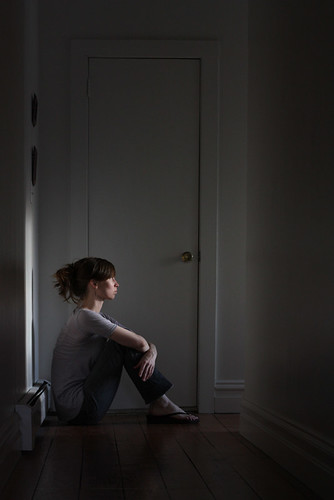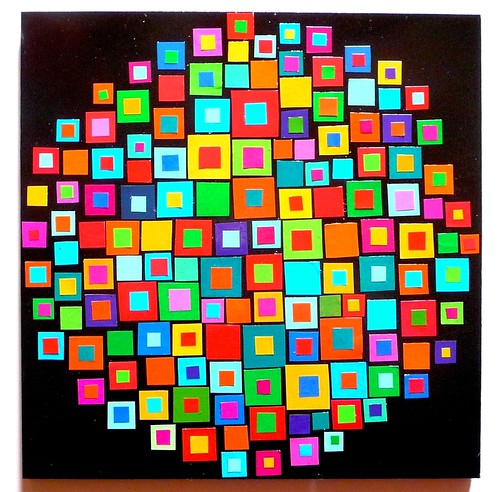So we decided to move from that failure with our heads held high and be really brutal about where our group was going, to criticise our progress and focus our ideas so we could come up with a tangible idea. We started this by forcing ourselves to summarise our different strands of discussion into one working title and then apply our installation ideas from there.
- Can we ever see a true identity?
- Person will always react differently when they're aware they could be being watched
- How do some people react on their own compared to in a group?
- How does a person act when they're feeling watched, when they're not?
- Where does paranoia fit in?
- Identity can't be narrowed down as its always changing
- How can you ever find a true identity? If you acknowledge it, then once you've made this acknowledgement you have an awareness and could change it.
We came up with the title:
COMPOSING IDENTITY
Then we distilled how we'd break this title down, what was relevant and what was a logical progression for here onwards.
WHY - protection of life, of image, humanity,
HOW - more stereotyped, where they come from
WHEN - changes when you're on your own and when you're with someone else or being watched
AIM of PERFORMANCE
- People aren't going to be themselves when they know they're in the play, only way might get closer to this is when they're on their own, isolating the audience? Isolate some and not others?
- Recreating the way identity changes in nature but with an awareness of the performance context
- Explore how it is impossible to be the true self, in representation and in behaviour
From this spurted the ingenious idea of SQUARES
Dividing the studio up into a number of different 'squares' or sections, each square would have a different installation, exploring different areas of how identity can be altered according to environment & keeping the contents of the squares hidden from the other squares, so that the audience don't find out the full contents of the performance piece until afterwards.
Initial square ideas that we came up with included:
Initial square ideas that we came up with included:
 1) An audience member watching a tv screen (seems live but actually pre-recorded) of one of us acting normal, either going around our daily lives in a normal looking room or strolling up and down as if in another square, but then on the video we start 'watching' the audience. Using the Auditorium project as a reference point of how we might achieve this effectively, plus exploring the effect of a voyeur being watched.
1) An audience member watching a tv screen (seems live but actually pre-recorded) of one of us acting normal, either going around our daily lives in a normal looking room or strolling up and down as if in another square, but then on the video we start 'watching' the audience. Using the Auditorium project as a reference point of how we might achieve this effectively, plus exploring the effect of a voyeur being watched.2) An audience member watching someone else in another square (the other person not neccessarily aware of such), and putting the first person in a role of authority, e.g. shout out if they're do a particular act. In the second square, they'd be doing any of the other installations we come up with, we just use whatever act they're being encouraged to do as the particular act the viewer is picking up on. The combination of the power of watching others combined with the realisation that you're being watched. Also explore concept of survallience and big brother theories.

3) Give the audience member(s) a speech to perform, a monologue that contains very little stereotyped content but giving them a character who is usually very stereotyped and reflect on how much the automatically apply such a stereotype. Perhaps may also put up stereotyped figures that reflect this character to influence this. Also, exploring the way that like the Plinth, they make a performance of it rather than just reading the speech. Also for this performance to have an audience...
4) Same as above but without an audience, do people still perform even when the're not being watched. how much effort will they put into and will they feel self-concious, doing something performative with no visable audience. will they think there's a hidden audience.
 5) A somewhat scripted but improv dialogue between one of the team and an audience member. Intimate.Looking at how we mimic other peoples actions, langauage, behaviours and how people react in a social situation. Subtley copying the other person's behaviours and see how this changes the situation.
5) A somewhat scripted but improv dialogue between one of the team and an audience member. Intimate.Looking at how we mimic other peoples actions, langauage, behaviours and how people react in a social situation. Subtley copying the other person's behaviours and see how this changes the situation.
 5) A somewhat scripted but improv dialogue between one of the team and an audience member. Intimate.Looking at how we mimic other peoples actions, langauage, behaviours and how people react in a social situation. Subtley copying the other person's behaviours and see how this changes the situation.
5) A somewhat scripted but improv dialogue between one of the team and an audience member. Intimate.Looking at how we mimic other peoples actions, langauage, behaviours and how people react in a social situation. Subtley copying the other person's behaviours and see how this changes the situation.6) A square to make the isolated audience member feel defensive and reclusive, looking not only at how environments can make people perform but also quieten and hide themselves in protection.Feeling of vunerablity. Thought about doing an audio commentary of what the person was doing, not in a personal way just so they think they're being analysed, 'you raised your left arm, you scratched your right knee'
7) Putting a person on their own in a comfortable, safe room so that they're at ease, where they could be themselves, have comfy seat, a selection of books, an ipod. Sense of escapism from the world and from the performance. How much can they forget about the performative situation they're in, how much can a person be themselves. Provides an interesting comparison to the stresses the other people feel.
8) Name, something to do with changing the person who has entered's name, making them adopt a different identity... lanaguage and name with identity very interesting, not sure how to realise it yet but worth exploring
9) Identity and the face. Perhaps giving the person something to draw a face onto, can give it any identity they like. Again needs exploring but great avenue to explore.
- Changing different environments
- Need to speak to the arts centre about borrowing black drapes
Task for next session: Think about does the performance have any setting or is it a hazy environment? Also research into 1 & 2
Images:
- http://image.guardian.co.uk/sys-images/Books/Pix/pictures/2007/02/13/roses460300.jpg
- http://farm4.static.flickr.com/3620/3421779884_0cbb3b51e1.jpg
- http://gotgamepro.files.wordpress.com/2009/01/reality-tv2.jpg
- http://www.123cctv.co.uk/catalog/images/YC%2090PH.jpg
- http://www.publicspeakingexpert.co.uk/images/7858.jpg
- http://farm5.static.flickr.com/4043/4312033217_d0411343aa.jpg
Images:
- http://image.guardian.co.uk/sys-images/Books/Pix/pictures/2007/02/13/roses460300.jpg
- http://farm4.static.flickr.com/3620/3421779884_0cbb3b51e1.jpg
- http://gotgamepro.files.wordpress.com/2009/01/reality-tv2.jpg
- http://www.123cctv.co.uk/catalog/images/YC%2090PH.jpg
- http://www.publicspeakingexpert.co.uk/images/7858.jpg
- http://farm5.static.flickr.com/4043/4312033217_d0411343aa.jpg

